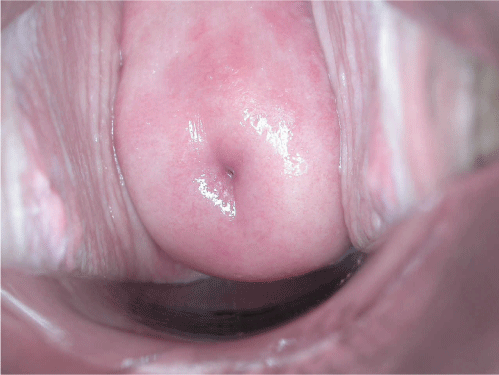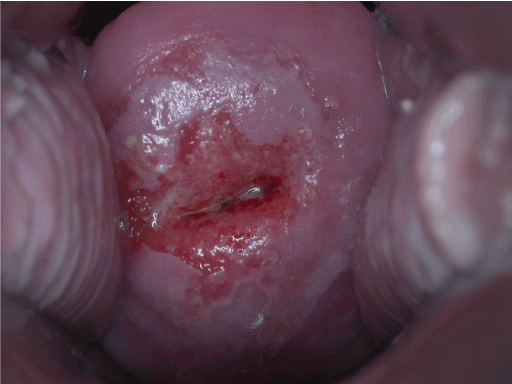Obstetrics and Gynaecology Cases - Reviews
VIA and Challenges of a Single Visit Approach in Malawi
Haeok Lee1,2*, Mary Sue Makin3, Jasintha T Mtengezo4,5 and Address Malata6
1Professor, Department of Nursing, University of Massachusetts Boston, MA, USA
2Adjunct Professor, College of Nursing, Daeyang University, Lilongwe, Malawi
3College of Medicine, Daeyang University, Lilongwe, Malawi
4PhD program student, Department of Nursing, University of Massachusetts Boston, MA, USA
5Former Dean, College of Nursing, Daeyang University, Lilongwe, Malawi
6Professor and Dean, Kamuzu College of Nursing, University of Malawi, Lilongwe, Malawi
*Corresponding author: Haeok Lee, RN, PhD, FAAN, Professor, College of Nursing & Health Sciences, University of Massachusetts Boston, 100 Morrissey Boulevard Boston, MA 02125-3393, USA, Tel: (617) 287-5071, Fax: (617) 287-7527, E-Mail: haeok.lee@umb.edu
Obstet Gynecol Cases Rev, OGCR-2-065, (Volume 2, Issue 6), Case Report; ISSN: 2377-9004
Received: September 11, 2015 | Accepted: October 28, 2015 | Published: November 01, 2015
Citation: Lee H, Makin MS, Mtengezo JT, Malata A (2015) VIA and Challenges of a Single Visit Approach in Malawi. Obstet Gynecol Cases Rev 2:065. 10.23937/2377-9004/1410065
Copyright: © 2015 Lee H, et al This is an open-access article distributed under the terms of the Creative Commons Attribution License, which permits unrestricted use, distribution, and reproduction in any medium, provided the original author and source are credited.
Abstract
Cancer of the cervix is the most common cancer in women in sub-Saharan Africa. This is a report of the experience of a 25 year-old HIV negative woman with five children who was detected with a precancerous lesion with VIA at a local health facility. She was referred for post-VIA treatment at another facility 60 Km away. She traveled all day for her follow-up treatment and spent all her money to get there so that she had none remaining to pay for food or her return bus fare. This case study points to the fact that women of low socioeconomic status who live in rural areas are more vulnerable to cervical cancer due to a lack of access to screening and treatment.
Key words
Cervical cancer, Visual inspection of the cervix, Developing country, Cancer prevention
Introduction
Cervical cancer is the fourth most common cancer among women and 528,000 new cases were diagnosed worldwide in 2012. Approximately 84% of cervical cancer cases occur in less developed countries. Malawi has the highest rate of cervical cancer (76 per 100,000) followed by Mozambique (65 per 100,000) these rates are more than 6 times higher compared to the U.S (8 per 100,000) [1-3]. Cervical cancer is preventable and curable if detected early. HPV vaccination and Pap smear cancer screening have been demonstrated to be effective in prevention. However, these methods are too expensive for use in the resource-limited developing countries. Only about 5% of women in developing countries have been screened within the past five years, compared with about 70% in the U.S. The WHO promotes Visual Inspection with Acetic Acid (VIA) and treatment with cryotherapy as one of the 'best buys' for low and middle-income countries. VIA screening, which is simple and easy-to-learn when compared with other screening tests, requires a minimum of infrastructure so screening coverage can be provided to a larger percentage of the population. Malawi is a poor country in southern Africa with a Human Development Index of 164 out of 177 countries [1]. Cervical cancer is the most common cancer among women accounting for approximately 45% of women's cancers. Malawi, like many countries in Sub-Sahara Africa, lacks the financial resources to provide VIA screening delivery systems for early detection of precancerous lesions and treatment. As a result, cervical cancer prevalence and mortality has significantly increased.
Case Study
The patient is a 25 year-old HIV negative woman with five children. She received VIA screening at a clinic in a local mission hospital. Her VIA screening detected an aceto-white lesion of the cervix (Figure 1 and Figure 2) which was too large to be covered by the cryotherapy probe at the mission hospital. So she was referred to the nearest gynecologist at another mission hospital In Lilongwe, the capital city of Malawi, 60 kilometers from the local mission hospital. The appointment was arranged for treatment but travel to get there was difficult. It took all day to travel from her home to the hospital in Lilongwe. It required her to walk to the nearest bus stop and then transfer buses three times. A loop electrosurgical excision procedure (LEEP) was performed under local anesthesia by the gynecologist. It was almost evening before the procedure was finished. The patient had spent all her money for her transportation and there was no place for her to stay for the night. The gynecologist suggested that she could sleep in the hospital lobby with a group of about ten patient guardians who were already planning to spend the night there. In the morning the patient received a small amount of money from the health care provider and she was able to return to her home. Three weeks later the histopathology report was released with the conclusion that the tissue showed mild dysplasia (CIN-I) and HPV changes. This case study highlights the difficulties at a grassroots level of obtaining appropriate treatment for a woman who had a positive VIA screening and who required follow up treatment for a large lesion on the cervix.
Discussion
Visual inspection with 3 to 5% acidic acid (VIA) has emerged as a promising cost-effective method for women who live in resource-limited countries [4,5]. Abnormal cervical tissue that comes into contact with the acetic acid dilution temporarily turns white in color allowing the provider to make an immediate assessment which can be followed by immediate treatment. While a single visit see-and-treat approach is good, the testing and treatment is not usually accomplished within in one visit due to factors in both patients and the health care systems. For example from the patients' perspectives, some married women may refuse treatment or not be allowed to make the decision alone without obtaining consent from their husbands or members of their families [6-8].
As for the health care systems, in Malawi, cervical cancer screening and treatment programs have been started based on the financial support from different international non-governmental organizations (NGOs) and VIA was introduced more than 2 decades ago [8]. Since 2004 Malawi has rolled out a national program to prevent cervical cancer using VIA as the screening tool and cryotherapy as the early treatment for pre-cancerous lesions [9]. However, cervical cancer screening programs have faced challenges as donor-supported cervical cancer screening and early treatment has been phased out. A national survey of 29 districts was conducted to evaluate health system gaps responsible for the poor performance of the cervical cancer program. Results showed that the challenges in the management of the cervical cancer program at the district level included inadequate service providers, lack of basic equipment and stock-outs of basic medical supplies. Among 21 surveyed health facilities, only 7 provided both screening and treatment. The rest had to refer clients who screened positive to the nearest district or central hospital. Moreover, health facilities commonly experienced a general shortage of supplies such as weak acetic acid (vinegar), gas (carbon dioxide or nitrous oxide for cryotherapy), clean vaginal specula, and morphine. Many VIA providers used their own money to buy gas and other supplies to ensure that the patients would not be sent back without treatment [9,10].
In general, cancer prevalence is increasing in the Malawi and sub-Saharan countries and the prevalence of cervical cancer has increased faster than would be expected from the slow improvement of life expectancy (LE) in developing countries (which is 53 years in Malawi compared to 79 years in the U.S. and 84 in Japan). Cervical cancer and pre-cancer occurs among relatively young women in developing countries including Malawi as in the case we reported. Although lack of awareness about cervical cancer and knowledge about prevention are cited as key barriers in preventing this cancer, this client's story illustrates the challenges many women face to receive both screening and treatment for prevention of cervical cancer. The goal of an effective screening program is not only to identify individuals who screen positive for a disease but to also offer adequate, accessible and timely treatment if indicated. [4,5,10]
This case study points to the fact that women of low socioeconomic status and who live in rural areas are more vulnerable to cervical cancer due to a lack of access to screening and treatment. In Malawi, VIA services are offered mostly at the hospital level and not at primary care settings. Some health facilities refer patients for post-VIA screening treatment to central hospitals which are located great distances away. Also bear in mind that Malawi is one of the poorest countries in the world and those women and their families have limited or no financial resources to use for transportation to another health facility to receive preventive treatment to complete the prevention process [9]. Our case study also points to the fact that as long as there is no national political will to implement proper cervical cancer screening programs, incidence and mortality from cervical cancer will not decrease. Cervical cancer remains the most common cancer in the resource-limited countries, and the fight against cervical cancer should not alone be the responsibility of a few NGOs who face financial constraints. Collaboration between health care providers and the community to provide cervical cancer screening and treatment (such as VIA and post-VIA treatments) at the healthcare center level or through community education efforts by the use of mobile vans might help to address the current challenges such as distance and cost.
AcknowledgmentThe authors gratefully acknowledge the photos of cervicography provided by National Testing Lab (NTL). Co. LTD. 1175-9 Jukjeon-dong, Suji-gu, Yongin-si, Gyeonggi-do, Korea.
References
-
http://www.who.int/countryfocus/cooperation_strategy/ccsbrief_malawi_en.pdf
-
http://www.wcrf.org/int/cancer-facts-figures/data-specific-cancers/cervical-cancer-statistics
-
http://seer.cancer.gov/statfacts/html/cervix.html
-
http://www.iarc.fr/en/publications/pdfs-online/prev/handbook10/HANDBOOK10.pdf
-
Lee H, Kiang Y, Joo W (2015) Cervical cancer prevention in developing countries: Using Visual Inspection Method. Clinical Journal of Oncology Nursing.
-
Chadza E, Chirwa E, Maluwa A, Malata A, Kazembe A, et al. (2012) Factors that contribute to delay in seeking cervical cancer diagnosis and treatment among women in Malawi. Health 4: 1015-1022.
-
Munthali AC, Ngwira BM, Taulo F (2015) Exploring barriers to the delivery of cervical cancer screening and early treatment services in Malawi: Some views from service providers. Patient Preference and Adherence 9: 501-508.
-
Ports KA, Reddy DM, Rameshbabu A (2015) Cervical cancer prevention in Malawi: a qualitative study of women's perspectives. J Health Commun 20: 97-104.
-
Maseko FC, Chirwa ML, Muula AS (2015) Health systems challenges in cervical cancer prevention program in Malawi. Glob Health Action 8: 26282.
-
Chidyaonga-Maseko F, Chirwa ML, Muula AS (2015) Underutilization of cervical cancer prevention services in low and middle income countries: a review of contributing factors. Pan Afr Med J 21: 231.







